#3D Design and Rendering
Explore tagged Tumblr posts
Text
The Technology Behind Stunning 3D Design and Rendering
In an era where visual communication reigns supreme, the ability to create photorealistic and immersive digital experiences has become indispensable across numerous industries, particularly in architecture, product development, and entertainment. This remarkable transformation of abstract ideas into tangible visuals is driven by the sophisticated interplay of various technologies underpinning 3D design and rendering. It's a complex ecosystem of software, hardware, and algorithms that together conjure stunning imagery, enabling creators to visualize, iterate, and present their concepts with unparalleled fidelity. Understanding the technological backbone that powers stunning 3D design and rendering is crucial for appreciating the intricate process involved in bringing digital worlds to life and realizing complex visions with breathtaking realism and precision.
Powerful Software Drives Exceptional 3D Design and Rendering
At the core of any high-quality 3D design and rendering workflow lies powerful software. Programs like Autodesk 3ds Max, Maya, SketchUp, Blender, and Cinema 4D provide the fundamental tools for modeling, texturing, rigging, and animation. These platforms offer extensive features for creating complex geometries, applying realistic materials, and setting up intricate scene compositions. The continuous evolution of these software suites, with constant updates and new functionalities, empowers artists and designers to push the boundaries of what's possible in 3D design and rendering. Choosing the right software, tailored to specific project needs, is the first critical step in achieving stunning visual outputs.
Advanced Modeling Techniques for Realistic 3D Design and Rendering
The foundation of any 3D design and rendering project is the creation of accurate and detailed 3D models. This involves various advanced modeling techniques, including polygon modeling for intricate details, NURBS for smooth, organic surfaces, and CAD integration for architectural precision. Photogrammetry and 3D scanning technologies are also increasingly used to capture real-world objects and environments, translating them into digital assets. The meticulous application of these modeling techniques is what ensures the geometric accuracy and visual fidelity of objects and structures within the 3D scene, making them truly convincing elements in the overall 3D design and rendering.
Material and Texturing for Immersive 3D Design and Rendering
To achieve true photorealism in 3D design and rendering, the appearance of surfaces is paramount. This involves sophisticated material creation and texturing processes. Physically Based Rendering (PBR) workflows are standard, simulating how light interacts with surfaces in the real world based on properties like albedo, roughness, metallicness, and normal maps. Advanced texturing tools allow artists to paint intricate details, dirt, wear, and tear, making surfaces look authentic and lived-in. The careful selection and application of materials and textures are crucial, as they significantly influence the believability and immersive quality of the final 3D design and rendering.
Lighting and Shading for Atmospheric 3D Design and Rendering
Lighting is arguably the most critical element in elevating 3D design and rendering from mere models to captivating scenes. Realistic lighting simulates natural phenomena, using global illumination (GI) to calculate how light bounces off surfaces, creating soft shadows and natural color bleeding. Techniques like ambient occlusion (AO) add depth, while volumetric lighting creates atmospheric effects like fog or dust rays. Shading models define how light interacts with materials, influencing reflectivity, translucency, and subsurface scattering. Mastering these intricate lighting and shading principles is what breathes life into a scene, setting the mood and enhancing the realism of 3D design and rendering.
High-Performance Hardware for Efficient 3D Design and Rendering
The demanding computations involved in 3D design and rendering require powerful hardware. High-end CPUs are essential for processing complex geometries and running simulation tasks, while GPUs (Graphics Processing Units) are the workhorses for rendering, with specialized cores accelerating ray tracing and AI denoising. Ample RAM is necessary for handling large scene files and complex textures. Fast SSDs improve loading times, and robust cooling systems ensure stable performance. Investing in the right hardware infrastructure is non-negotiable for an efficient workflow, allowing artists to iterate quickly and produce high-quality 3D design and rendering outputs in a timely manner.
Render Engines: The Brains Behind 3D Design and Rendering
Render engines are the specialized software components that calculate how light interacts with objects in a 3D scene to produce a final image. There are various types, including unbiased renderers (like V-Ray, Corona, Octane, Redshift) that simulate light paths with high accuracy, and biased renderers that use approximations for faster results. Real-time render engines, found in game engines like Unreal Engine and Unity, are gaining traction for interactive experiences. The choice of render engine significantly impacts the visual quality, rendering speed, and features available for a project, making it a critical decision in the 3D design and rendering pipeline.
Renderexpo: Mastering the Art and Science of 3D Design and Rendering
Bringing together all these complex technologies and artistic expertise requires a specialized team. Renderexpo - 3D ARCHITECTURAL RENDERING SERVICES stands at the forefront of the industry, meticulously leveraging the latest advancements in 3D design and rendering. Our studio employs powerful software, cutting-edge hardware, and a deep understanding of lighting, texturing, and rendering algorithms to transform architectural visions into stunning, photorealistic realities. With a commitment to innovation and visual excellence, Renderexpo utilizes the most effective technologies to ensure that your 3D design and rendering projects are not only visually spectacular but also precisely executed, fulfilling your every creative need.
Conclusion
The journey from a conceptual idea to a stunning visual reality in 3D design and rendering is a testament to the remarkable advancements in technology. It's a sophisticated interplay of powerful software, intricate modeling techniques, realistic material simulations, masterful lighting, high-performance hardware, and intelligent render engines. Each component plays a crucial role in crafting immersive digital experiences that captivate and inform. Understanding this technological foundation not only demystifies the process but also highlights the immense skill and precision required to produce truly exceptional 3D design and rendering. As technology continues to evolve, the possibilities for bringing ever more realistic and compelling visions to life will only expand.
0 notes
Text
Unlocking Creativity: The Power of 3D Design and Rendering
In an era where visual communication reigns supreme, the ability to transform abstract ideas into tangible, photorealistic representations is a superpower. This is the essence of 3D design and rendering a dynamic field that transcends traditional boundaries, allowing creators to explore, iterate, and present concepts with unparalleled clarity and impact. From architectural marvels to product prototypes, 3D design and rendering empowers professionals across various industries to visualize their imagination with stunning precision. At Renderexpo, we harness this transformative power, specializing in 3D architectural rendering that brings blueprints to life, enabling clients to fully grasp the potential of their projects and pushing the boundaries of creative visualization.
Visualizing Ideas: The Core of 3D Design and Rendering
At its heart, 3D design and rendering is about giving form to ideas that exist only in the mind's eye. It’s the process of constructing virtual models that can be manipulated, viewed from any angle, and imbued with realistic textures and lighting. This capability is revolutionary for architects, designers, and engineers, allowing them to explore design variations, identify potential issues, and refine concepts long before physical construction or production begins. The iterative nature of 3D design and rendering makes it an indispensable tool for turning conceptual thoughts into concrete visual realities.
Iterative Design: Rapid Prototyping through 3D Design and Rendering
One of the most significant advantages of 3D design and rendering is its facilitation of rapid, iterative design. Instead of costly and time-consuming physical prototypes, designers can quickly create multiple digital versions of a product or architectural space. This allows for swift experimentation with different materials, colors, and spatial arrangements, garnering immediate feedback and making necessary adjustments on the fly. This agility in 3D design and rendering drastically shortens development cycles and encourages bolder, more innovative creative solutions.
Enhancing Communication with Powerful 3D Design and Rendering
Effective communication is paramount in any project, and 3D design and rendering excels at bridging communication gaps. Complex technical drawings or abstract verbal descriptions can often lead to misinterpretations. However, a photorealistic 3D render or animation provides a universally understood visual language. Stakeholders, clients, and even regulatory bodies can easily grasp the aesthetic and functional aspects of a design, fostering clearer discussions and quicker approvals. The visual clarity offered by 3D design and rendering minimizes ambiguities and maximizes understanding.
Marketing and Sales: The Persuasive Edge of 3D Design and Rendering
In competitive markets, the ability to present a project in the most compelling light is critical. 3D design and rendering offers an unparalleled persuasive edge for marketing and sales efforts. High-quality visuals can captivate audiences, evoke emotion, and allow potential buyers or investors to envision themselves within a space or using a product. This immersive experience is far more impactful than traditional marketing materials, driving engagement and accelerating decision-making. Renderexpo understands how 3D design and rendering fuels successful marketing campaigns.
Problem-Solving: Identifying Issues with 3D Design and Rendering
Beyond its aesthetic appeal, 3D design and rendering serves as a powerful problem-solving tool. By constructing a precise virtual model, designers can identify potential structural flaws, spatial inefficiencies, or clashes between different elements long before they manifest in the physical world. This proactive approach saves significant time and resources, preventing costly mistakes during construction or manufacturing. The analytical capabilities of 3D design and rendering make it an indispensable asset for ensuring design integrity and functionality.
Realism and Immersive Experiences from 3D Design and Rendering
The ultimate power of 3D design and rendering lies in its capacity to generate photorealistic imagery and immersive experiences. Through advanced lighting, material shaders, and environmental effects, a digital model can be rendered with astonishing realism, blurring the lines between virtual and reality. Furthermore, with the advent of virtual reality (VR) and augmented reality (AR), 3D design and rendering can transport users directly into the proposed environment, offering an unparalleled sense of presence and detailed exploration.
Future-Proofing Innovation Through 3D Design and Rendering
As technology continues to evolve, proficiency in 3D design and rendering becomes increasingly vital for future-proofing innovation across various industries. From smart cities and sustainable architecture to personalized product manufacturing, the ability to visualize and iterate in a three-dimensional digital space will remain a core competency. Professionals who master 3D design and rendering are not just adapting to current trends; they are actively shaping the future of design and development, pushing the boundaries of what is possible.
Conclusion
The power of 3D design and rendering is truly transformative, serving as a catalyst for unlocking unparalleled creativity and efficiency in countless domains. From the initial spark of an idea to its photorealistic realization, this technology empowers architects, designers, and innovators to visualize, iterate, and communicate with exceptional clarity. At Renderexpo, our expertise in 3D architectural rendering exemplifies how this powerful tool can turn abstract concepts into tangible, compelling realities. By embracing 3D design and rendering, you not only enhance your visual output but also streamline your workflow, solve complex challenges, and ultimately, bring your most ambitious visions to life with precision and impact.
0 notes
Text
How 3D Design and Rendering Enhances Client Presentations and Approvals?
In today's competitive market, businesses need innovative solutions that help them stand out. One of the most effective tools available is 3D design and rendering. This technology has transformed the way businesses present their ideas, concepts, and products, offering a higher level of visualization and interactivity. Whether you are a real estate agent, an architect, or a product designer, utilizing 3D design and rendering in your presentations can make a significant difference. This article will explore how 3D design and rendering can enhance client presentations and approvals, boosting project confidence, and streamlining decision-making processes.
Visualizing Ideas Clearly with 3D Design and Rendering
3D design and rendering offer a powerful way to present concepts with clarity and precision. Unlike traditional 2D sketches or drawings, 3D designs allow clients to view projects from multiple angles and perspectives. This visual representation of ideas helps stakeholders understand complex ideas in a more tangible and realistic manner. Whether it's a new building, a product prototype, or a landscaping design, 3D design and rendering provide a detailed and immersive look at the end result. It eliminates any confusion and ensures that everyone involved shares the same vision, leading to more effective collaboration and decision-making.
Faster Client Approvals Through Realistic Presentations
One of the most significant advantages of 3D design and rendering is the speed at which clients can approve designs. Traditional 2D sketches often leave room for interpretation, causing delays and potential misunderstandings. With 3D design and rendering, clients can visualize the finished project with remarkable realism, which speeds up the approval process. The ability to present a design in 3D enables clients to give more detailed feedback and make decisions quickly, ultimately accelerating the timeline of the project. Realistic 3D renders provide a clear, accurate representation of the final outcome, making it easier for clients to sign off and move forward with confidence.
Boosting Project Confidence with 3D Design and Rendering
When it comes to securing client confidence, nothing works better than seeing a realistic representation of what you plan to deliver. 3D design and rendering serve as powerful tools in boosting trust in your ideas. Clients are more likely to feel secure about the project when they can visualize exactly how the end result will look. By showcasing the project in its full three-dimensional glory, you demonstrate professionalism and attention to detail. Moreover, clients can see how their feedback and suggestions are incorporated into the design, fostering a sense of collaboration and ownership in the process, which in turn boosts their confidence in the project.
How 3D Design and Rendering Improves Communication?
Effective communication is at the heart of any successful project. 3D design and rendering enhance communication by providing a common visual language that everyone can understand. Instead of relying on technical jargon or abstract descriptions, 3D models allow clients and teams to visually discuss the design. Whether it’s highlighting key features, proposing design changes, or addressing potential issues, 3D design and rendering enable clear communication that transcends language barriers. This visual clarity ensures that all stakeholders are on the same page and minimizes the risk of costly misinterpretations, ultimately leading to smoother workflows and better project outcomes.
Creating Impressive Client Experiences with 3D Visualization
3D visualization is more than just a tool for design; it’s a way to create an unforgettable client experience. When clients are presented with highly detailed and lifelike 3D models, they are often amazed by the depth and realism of the design. This immersive experience captures their attention and makes the project stand out in their minds. Whether it’s a virtual walk-through of a building or an interactive product demo, 3D design and rendering provide a level of engagement that traditional methods cannot match. This not only makes the presentation more compelling but also leaves a lasting impression, ensuring that your project is remembered for its innovative approach.
Streamlining Decision Making Using 3D Design and Rendering
In any project, the decision-making process can often be slow and complicated. However, 3D design and rendering streamline this process by allowing for real-time visual exploration. When stakeholders can interact with a 3D model and make modifications on the fly, the need for extensive meetings and back-and-forth discussions is reduced. This interactivity ensures that decisions are made quickly and efficiently, without compromising on quality or detail. With 3D design and rendering, clients and project teams can experiment with different ideas, compare alternatives, and finalize the design faster. This leads to quicker project timelines and a more seamless workflow.
Helping Clients See the Final Vision Before Work Begins
One of the most valuable aspects of 3D design and rendering is its ability to give clients a clear view of the finished product before any physical work begins. This foresight helps clients envision the outcome with greater accuracy, ensuring that there are no unpleasant surprises down the line. By showing them a high-quality 3D render of the project, you eliminate ambiguity and set realistic expectations. This proactive approach also allows clients to request changes or refinements to the design before construction or production starts, saving time and costs later on. The ability to see the final vision in advance also builds trust and ensures that everyone is aligned with the project’s goals.
Conclusion
3D design and rendering are invaluable tools for enhancing client presentations and approvals. By offering clear visualizations, speeding up approval processes, boosting client confidence, improving communication, and creating impressive experiences, these technologies have revolutionized the way projects are presented. Whether you are designing a building, a product, or a marketing campaign, 3D design and rendering provide a level of clarity and realism that helps clients see the full potential of a project. As businesses continue to adopt these advanced tools, the benefits of 3D design and rendering will undoubtedly remain a key factor in the success of future projects.
0 notes
Photo

Kenneth Snelson Chain Bridge Bodies (1990)
#art#kenneth snelson#graphic design#3d#render#computer generated#cgi#artwork#artist#90s#1990s#1990#u
3K notes
·
View notes
Text
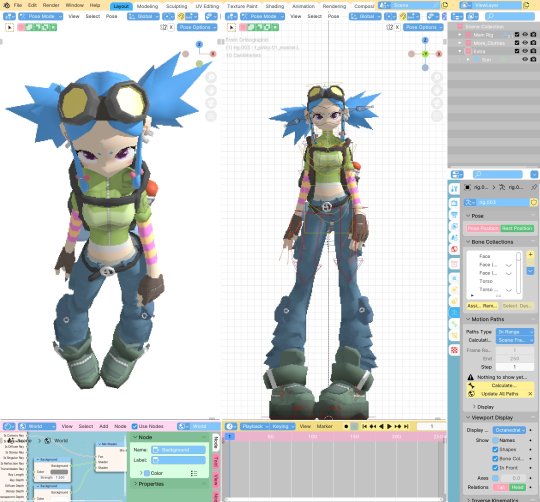
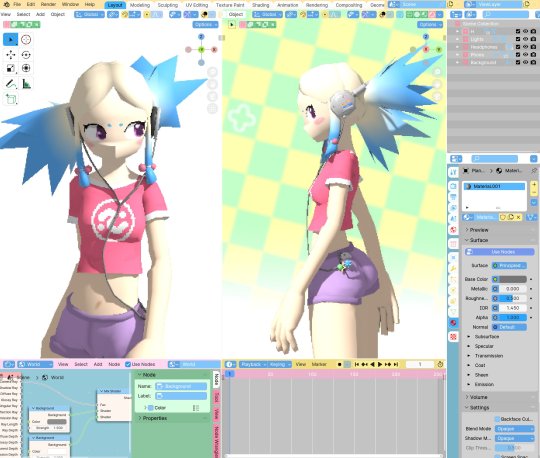
alecwest.co
#@alec.fbx#@alecwestworld#alecwest.co#art#design#digital art#character art#character design#concept art#color#style#3d art#3d artist#render#environment design#animation#3D low poly#3D low poly animation#video
850 notes
·
View notes
Text

A silly jester! Finally got around to modeling Jevil from Deltarune in 3D since he has been requested by a lot of people! 🎭
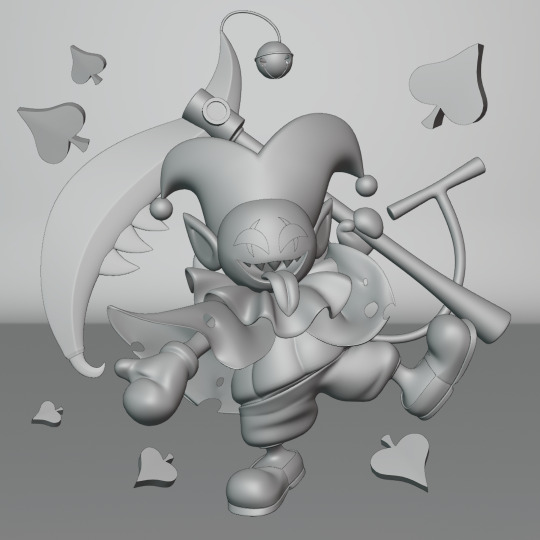
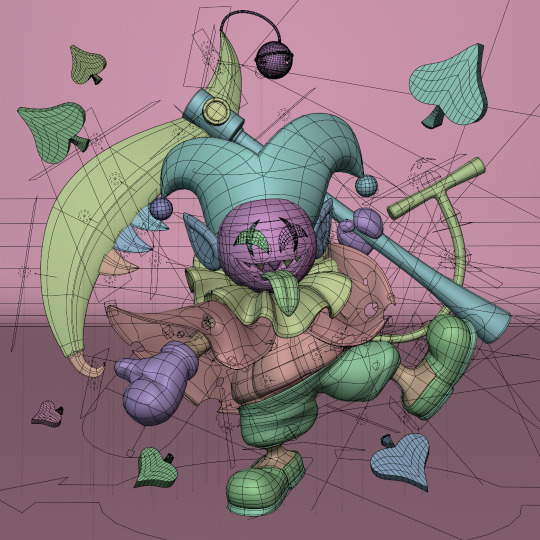
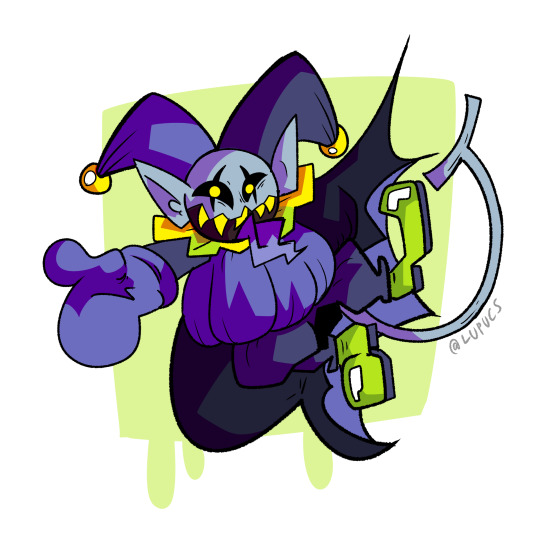
I'm a big fan of his sprite design plus I've been meaning to make his 3D model for a while now. I already made a drawing of him for a Tumblr ask, so I loosely based my model off of it and posed him in a similar way (I like to call it the "let's take ibuprofen together pose" :')). While my drawing is a lot more exaggerated, I tried to tone my 3D version down to make him more sprite accurate while still maintaining a decent degree of stylization. Hope you enjoy the spinny jester man!! 🎭
#deltarune#jevil#jevil deltarune#deltarune jevil#3D#blender#jevil 3D#fanart#my art#praying that nothing's intersecting in the render and turntable lol#lets take ibuprofen together#that scythe tho what is that i love it#such a bizarre design but honestly perfect for him
2K notes
·
View notes
Text
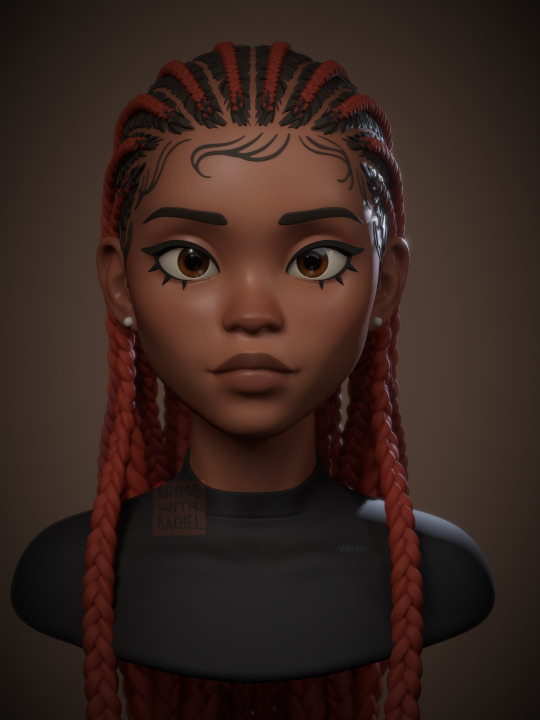
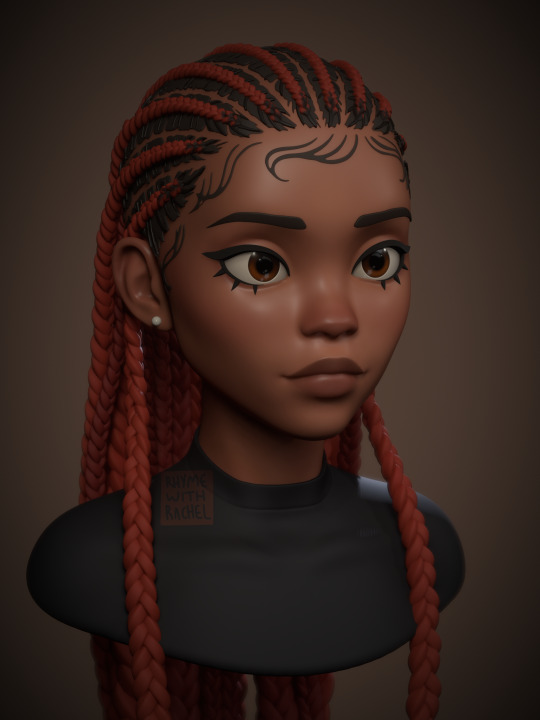
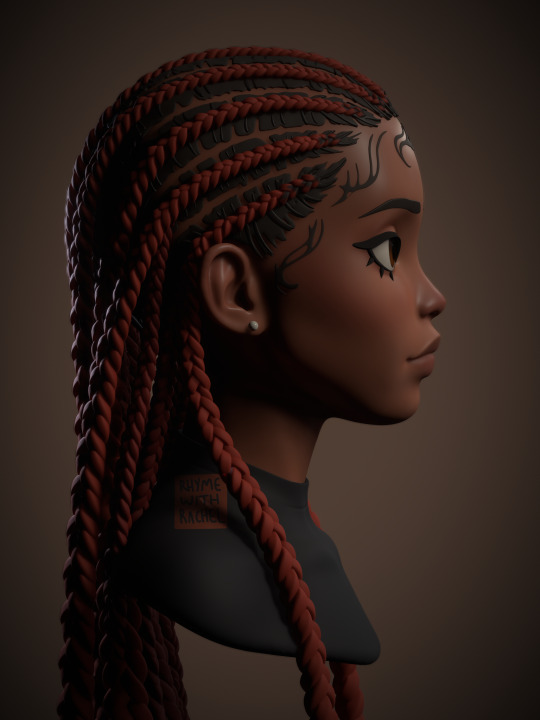

Latest sculpting project with my oc Lia ⭐️
4K notes
·
View notes
Text

Uli Architects
R House, 2020
#architecture#architectural design#architectural visualization#3d render#contemporary architecture#deconstructivism
139 notes
·
View notes
Text
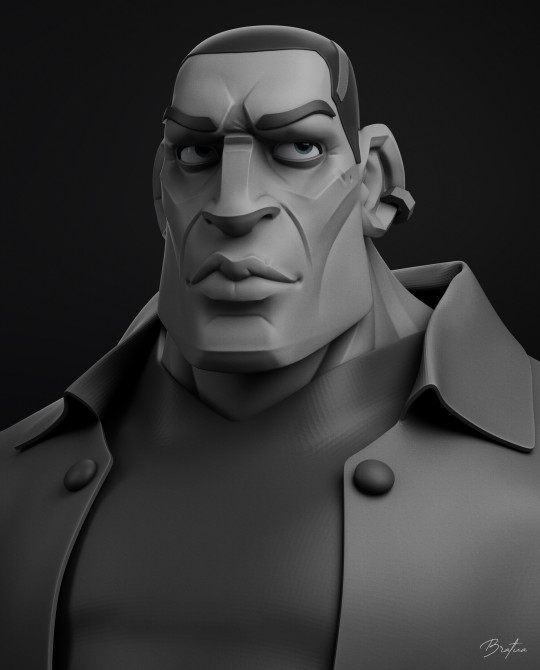
What is this tumblr thing?
#3d#artwork#artists on tumblr#stylized#character#character design#stylized character#blender#zbrush#3d artwork#stylized artwork#blender render#blender 3d#digital sculpture#digital character#digital art#creative process#art journey#3d sculpting#digital sculpting#3d render#3d art#3d artist
180 notes
·
View notes
Text
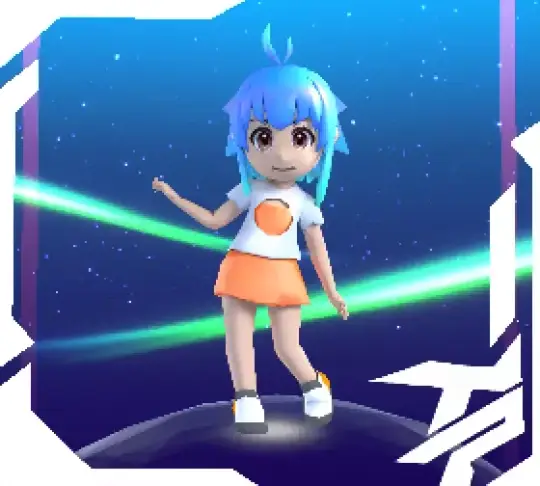
Natsumi Spin! 💫
#natsumipocket#oc#low poly#ローポリ#my art#artists on tumblr#ps1#psone#playstation1#playstation#blender#b3d#blender 3d#3d model#3d art#low poly art#low poly 3d#3d render#lowpoly#vectorheart#3dcg#2000s#early 2000s#original character#character design#3d animation#ps1 graphics#ps1 aesthetic#y2k#y2k aesthetic
403 notes
·
View notes
Text


YOU WORK FOR THEM × 2014
87 notes
·
View notes
Text
Unleashing Creativity: The Power of 3D Design and Rendering
In the realm of design, whether it's architecture, product development, or even entertainment, the journey from a nascent idea to a tangible, compelling visual has historically been fraught with limitations. Traditional sketching and 2D blueprints, while foundational, often fall short of conveying the true depth, texture, and emotional resonance of a creative vision. This is where the transformative capabilities of 3D design and rendering come into play. It's more than just a technical process; it's an art form that empowers creators to sculpt their imaginations into photorealistic realities, explore possibilities with unprecedented freedom, and communicate complex concepts with undeniable clarity. Understanding the profound impact of 3D design and rendering is essential for anyone looking to truly unleash their creative potential and elevate their projects.
Visualizing Ideas with Precise 3D Design and Rendering
The initial spark of an idea, no matter how brilliant, often exists as a hazy concept. 3D design and rendering provides the ultimate canvas for visualizing these abstract thoughts with unparalleled precision. Designers can build virtual models to exact specifications, experimenting with forms, proportions, and spatial relationships in a dynamic environment. This ability to meticulously craft and manipulate every element in a digital space ensures that the final output is not just aesthetically pleasing but also structurally sound and functionally viable. The precision inherent in 3D design and rendering allows for comprehensive exploration, guaranteeing that your initial vision is accurately and beautifully translated into a detailed digital model.
Iterating Designs with Flexible 3D Design and Rendering
The creative process is rarely a straight line; it thrives on iteration and refinement. 3D design and rendering offers a level of flexibility that traditional methods simply cannot match. Designers can rapidly experiment with different materials, lighting conditions, textures, and color schemes without the time and cost constraints associated with physical prototypes. This agility in 3D design and rendering allows for quick feedback loops, enabling designers to explore countless variations and pinpoint the optimal solution. It fosters an environment where creativity can flourish through endless experimentation, leading to truly innovative and highly optimized designs that might otherwise remain undiscovered.
Enhancing Client Engagement through 3D Design and Rendering
For architects and product developers, securing client buy-in is paramount. Explaining complex designs using only technical drawings can lead to misunderstandings and a lack of emotional connection. 3D design and rendering revolutionizes client engagement by providing immersive, interactive experiences. Clients can virtually walk through a proposed building, rotate a product to view it from every angle, or experience a new interior space as if they were already there. This heightened level of understanding and emotional involvement, facilitated by compelling 3D design and rendering, builds trust, fosters clear communication, and accelerates decision-making, ensuring client satisfaction from the outset.
Accelerating Time-to-Market with Efficient 3D Design and Rendering
In many industries, from product manufacturing to real estate, the speed at which a concept can move from idea to market can be a decisive factor in success. 3D design and rendering significantly accelerates this process. By creating photorealistic prototypes and compelling marketing visuals before physical production or construction begins, businesses can generate early interest, secure pre-orders, and streamline investor presentations. The efficiency gained through meticulous 3D design and rendering reduces the need for costly physical mock-ups and shortens the overall development cycle, allowing businesses to capitalize on market opportunities more swiftly and effectively.
Mitigating Risks with Proactive 3D Design and Rendering
Identifying potential flaws or challenges early in the design phase is crucial for avoiding expensive rework and delays. 3D design and rendering provides a powerful tool for proactive risk mitigation. Designers can simulate real-world conditions, analyze structural integrity, detect spatial conflicts, or even assess ergonomics in a virtual environment. This thorough pre-visualization, enabled by advanced 3D design and rendering, allows for the identification and correction of issues before they manifest in physical production or construction. It's an invaluable asset for ensuring design integrity and minimizing costly errors, thereby safeguarding project budgets and timelines.
Optimizing Marketing Appeal via 3D Design and Rendering
In a visually saturated world, standing out requires more than just good design—it requires exceptional presentation. 3D design and rendering delivers unparalleled marketing assets that grab attention and drive interest. High-resolution images, cinematic animations, and interactive virtual reality experiences can effectively convey a project's unique selling points and emotional appeal. These visually stunning materials, meticulously crafted through expert 3D design and rendering, are perfect for websites, brochures, sales centers, and social media campaigns, creating a powerful narrative that resonates with target audiences and significantly boosts market visibility and sales conversions.
Partnering with Renderexpo for Superior 3D Design and Rendering
To truly unleash the full power of 3D design and rendering, partnering with a specialized and experienced studio is key. Renderexpo - 3D ARCHITECTURAL RENDERING SERVICES offers unparalleled expertise in transforming conceptual ideas into breathtaking photorealistic visuals. With a deep understanding of architectural nuances and cutting-edge visualization technologies, Renderexpo brings precision, artistic flair, and a collaborative spirit to every project. By choosing Renderexpo for your 3D design and rendering needs, you ensure that your creative visions are not just brought to life, but are presented with the highest level of realism and impact, ensuring your project's success.
Conclusion
The transformative power of 3D design and rendering lies in its ability to liberate creativity from traditional constraints, allowing ideas to be visualized, iterated, and presented with unprecedented clarity and impact. It's a technology that empowers designers to engage clients more deeply, accelerate project timelines, mitigate risks, and create highly effective marketing materials. By providing a dynamic and immersive platform for ideation and communication, 3D design and rendering is indispensable for anyone looking to unlock their full creative potential and ensure their projects not only meet expectations but exceed them, setting new benchmarks for visual excellence and successful execution.
0 notes
Text
Mastering 3D Design and Rendering: A Beginner's Guide
Embarking on the journey of 3D design and rendering can seem daunting, yet it opens up a world of creative possibilities, especially within the dynamic field of 3D architectural rendering. From conceptualizing breathtaking structures to visualizing intricate interior spaces, the ability to translate ideas into photorealistic imagery is an invaluable skill. This guide from Renderexpo aims to demystify the process, providing a clear roadmap for beginners eager to master 3D design and rendering. Whether you're an aspiring architect, an interior designer, or simply someone fascinated by digital artistry, understanding the fundamentals of 3D design and rendering is your first step towards bringing your visions to life with stunning clarity and precision.
Core Principles of 3D Design and Rendering
Before diving into software, grasping the foundational concepts of 3D design and rendering is crucial for beginners. This involves understanding spatial relationships, perspective, and the importance of scale. Learning about polygons, vertices, and edges forms the basis of 3D modeling, which is the initial step in any 3D architectural rendering project. Familiarity with these core principles will empower you to build accurate and aesthetically pleasing models, setting a strong foundation for your journey in 3D design and rendering. Renderexpo emphasizes this fundamental knowledge for all aspiring visualization artists.
Essential Software Tools for 3D Design and Rendering
Choosing the right software is a pivotal decision for anyone starting in 3D design and rendering. Popular choices include Autodesk 3ds Max, SketchUp, Blender, and Cinema 4D, each offering unique strengths for various applications, particularly in 3D architectural rendering. For beginners, it's often wise to start with a user-friendly option that has ample tutorials and community support. Investing time in learning the interface and basic functionalities of your chosen software will significantly accelerate your progress in mastering 3D design and rendering techniques.
Crafting Detailed 3D Models in Your Design
The art of 3D modeling is where your architectural concepts begin to take shape. This stage involves translating 2D blueprints and sketches into a three-dimensional digital environment. Beginners should focus on creating clean, efficient geometry, ensuring that models are optimized for the subsequent rendering process. Precision in modeling is paramount for 3D architectural rendering, as inaccuracies here will propagate through the entire visualization pipeline. Mastering the tools for extrusion, boolean operations, and subdivision will greatly enhance your capabilities in 3D design and rendering.
Applying Realistic Materials for 3D Design and Rendering
Once your 3D model is complete, the next critical step in 3D design and rendering is applying realistic materials and textures. This transforms a bland digital object into a tangible, lifelike representation. Understanding properties like diffuse color, specularity, reflectivity, and bump mapping is essential. Experimenting with various material libraries and creating custom textures will significantly elevate the visual quality of your 3D architectural rendering. Renderexpo always emphasizes the importance of material realism in achieving compelling visualizations.
Mastering Lighting Techniques for 3D Design and Rendering
Lighting is arguably the most powerful tool in 3D design and rendering, capable of dramatically altering the mood and perception of a scene. Beginners should explore different light types – such as directional, point, and area lights – and understand their impact on shadows and reflections. Learning about global illumination and ambient occlusion will add depth and realism to your renders, particularly in 3D architectural rendering where atmosphere is key. Effective lighting truly brings your 3D designs to life, making them more immersive and engaging.
Post-Production: Enhancing Your 3D Design and Rendering
After the raw render is complete, post-production is where the final magic happens in 3D design and rendering. Using image editing software like Adobe Photoshop, you can refine colors, adjust contrast, and add atmospheric effects such as fog or lens flares. This stage allows for subtle enhancements that significantly boost the overall visual appeal and polish of your 3D architectural rendering. Mastering post-production techniques is crucial for achieving professional-grade results and making your 3D designs truly stand out.
Showcasing Your Portfolio of 3D Design and Rendering
Building a strong portfolio is essential for showcasing your skills in 3D design and rendering, especially if you're aiming for a career in 3D architectural rendering. For beginners, this means compiling your best work, even if it's based on personal projects or re-imaginings of existing designs. Present your renders clearly, with varying angles and lighting conditions, and consider adding brief descriptions of your creative process. A compelling portfolio demonstrates your mastery of 3D design and rendering and opens doors to exciting opportunities.
Conclusion
Mastering 3D design and rendering is an ongoing journey that rewards patience, persistence, and a passion for visual storytelling. This beginner's guide from Renderexpo has illuminated the fundamental steps, from understanding core principles and choosing software to advanced techniques like lighting and post-production, all crucial for high-quality 3D architectural rendering. Remember that practice is key; the more you experiment and create, the more proficient you will become. Embrace the learning process, leverage available resources, and consistently challenge yourself to push the boundaries of your creativity. The world of 3D design and rendering is constantly evolving, offering endless opportunities for those dedicated to transforming imagination into stunning visual realities.
0 notes
Text
The Impact of 3D Design and Rendering on Real Estate and Property Sales
In today’s competitive real estate market, presenting properties in the most engaging and immersive way is essential for attracting buyers and closing deals faster. This is where 3D Design and Rendering comes into play. By transforming traditional 2D images into lifelike, interactive visuals, it enables potential buyers to envision a space with a level of detail and realism previously unimaginable. Whether you're selling a luxury home or an apartment, the application of advanced 3D Design and Rendering techniques helps to capture attention, highlight the property’s unique features, and ultimately drive sales. With this technology, real estate professionals can offer an unforgettable experience that goes beyond static photographs or floor plans.
Boost Property Sales with Cutting Edge 3D Design and Rendering
For real estate professionals looking to boost property sales, utilizing 3D Design and Rendering is a game-changer. It enables a level of visualization that’s far superior to traditional marketing materials. High-quality 3D renderings provide prospective buyers with a clear picture of what to expect, from the layout of the rooms to the finer design elements, such as lighting, textures, and finishes. As buyers increasingly expect more interactive and visually stimulating presentations, offering a cutting-edge 3D design can set a property apart from the competition. Moreover, these realistic representations can often lead to quicker decision-making, encouraging buyers to commit without hesitation.
How 3D Design and Rendering Captivates Real Estate Buyers?
Captivating potential buyers is all about presenting properties in the best light possible, and 3D Design and Rendering does just that. With photorealistic renderings, buyers can experience a fully immersive environment, even before stepping foot in the property. From a simple walkthrough to detailed views of every room and angle, 3D Design and Rendering lets clients explore properties in a way that traditional photos simply cannot. The ability to visualize design options, such as changes to paint colors, furniture arrangements, or even lighting, further adds to the appeal. By engaging buyers in this dynamic way, the likelihood of a sale increases exponentially.
Visualize Dream Homes Through Innovative 3D Design and Rendering
One of the most exciting aspects of 3D Design and Rendering is its ability to bring dream homes to life. Potential buyers often struggle to imagine a space’s potential based on flat images and floor plans alone. However, with cutting-edge 3D design, they can see every detail in lifelike quality, whether it's a sprawling living room, a cozy kitchen, or a luxurious bathroom. This immersive experience allows buyers to not only see the finished product but also to feel emotionally connected to the space. This connection can be a powerful motivator for making an offer, driving sales in competitive markets where homes are in high demand.
The Role of 3D Design and Rendering in Faster Property Sales
Speed is a critical factor in today’s fast-paced real estate market, and 3D Design and Rendering plays a pivotal role in closing deals more quickly. By providing highly detailed, accurate representations of a property, these tools help prospective buyers make more informed decisions, reducing the need for multiple in-person visits. Instead, clients can explore every angle of the property virtually, often speeding up their decision-making process. Furthermore, because 3D Design and Rendering enables buyers to visualize any changes or improvements they might want to make, it can save time by eliminating uncertainties and allowing for faster negotiations. This process ultimately results in swifter property sales and a more streamlined closing.
Elevate Real Estate Marketing with Stunning 3D Design and Rendering
Marketing real estate properties effectively requires more than just traditional photos or basic descriptions. To elevate your marketing strategy, 3D Design and Rendering offers stunning visuals that capture the full potential of each property. These renderings allow prospective buyers to see not just the structure but the lifestyle it offers. Whether it’s showcasing how a living space can be transformed with different furnishings or highlighting natural light in various rooms, the versatility of 3D Design and Rendering makes it a powerful marketing tool. When these images are used in promotional materials, they stand out, grabbing the attention of online audiences, boosting engagement, and ultimately increasing sales.
Why Virtual Tours Powered by 3D Design and Rendering Matter?
Virtual tours powered by 3D Design and Rendering are quickly becoming an essential component of real estate marketing. These tours provide a fully interactive experience, allowing buyers to explore a property from the comfort of their home, at any time. Unlike static images or videos, virtual tours offer the flexibility of movement, enabling viewers to navigate rooms, view details up close, and virtually walk through hallways and doors. With potential buyers able to virtually "step inside" a home and get a real feel for the space, this enhances their decision-making process, making them more likely to follow through with a purchase.
The Future of Real Estate Sales with Advanced 3D Visualization
The future of real estate sales is increasingly shaped by 3D Design and Rendering technology. As virtual reality and augmented reality continue to evolve, real estate professionals are likely to see even more interactive tools at their disposal. These technologies will not only allow potential buyers to explore properties in more innovative ways but will also enable them to customize and personalize spaces in real-time. 3D Design and Rendering is paving the way for a future where property sales are more efficient, immersive, and responsive to buyers' needs. As technology advances, real estate agents who embrace these tools will have a competitive edge, attracting more buyers and closing deals faster.
Conclusion
3D Design and Rendering into the real estate sales process is no longer just an option—it’s an essential tool for staying competitive in the modern market. From boosting property sales and enhancing marketing strategies to providing faster and more efficient sales cycles, the benefits are clear. As buyers demand more interactive and realistic property experiences, 3D design tools offer a way to meet these expectations while driving sales. Looking ahead, the role of 3D Design and Rendering in real estate will only continue to expand, ensuring that the future of property sales is more visual, engaging, and buyer-friendly than ever before.
0 notes
Photo

by latte labs
3K notes
·
View notes
Text

kullervo stab stab
#this took so much effort#mostly because how complicated the design is#and the fact i don't have the fUCKING 3D MODEL REFERENCE UUHHUHGGHUHUHGHGUHUHGHGH#i guess it's got enough information but gosh my brain don't have enough computation power to render this fuck in 3d#also have to draw his hair#i don't like drawing that#i wanted to make a r34 version where the stake is in another hole but fuck it i drew so much that my heat already faded an hour ago#warframe#warframe kullervo#my art
96 notes
·
View notes